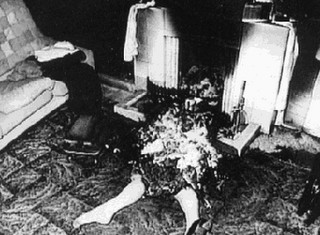The Mystery of Spontaneous Human Combustion
Spontaneous human combustion continues to baffle scientists, as yet another case is confirmed by a coroner.
On the 22nd of December, 2010, pensioner Michael Faherty, 76, was found dead at his home in Galway, Ireland.
His body was badly burned, but there was no other damage to the furnishing in his sitting room apart from singeing to the floor underneath his body, and smoke damage on the ceiling directly above where his body lay.
As is typical in a case of spontaneous human combustion, his body was partially cremated which suggests a heat of 700 - 1000 degrees centigrade which is far hotter than is normally found in house fires.
While there was a fire in the nearby fireplace, experts have confirmed that this did not cause the fire, not were there any sign of any accelerants used that could have started the fire on Mr Faherty.
After consulting many medical books, experienced coronor Dr. Ciaran McGloughlin, concluded that Mr Flaherty died from spontaneous human combustion.

What is spontaneous human combustion?
This is the term used when there is no other explanation. Normally fire investigators can tell you how a fire started, but in spontaneous human combustion, there is no traceable cause.
Not only that, but usually the body is incinerated as well as any crematorium might do. It takes an incredible heat to burn bone to dust, and house fires simply don't get that hot.
Quite often, the body is only partly incinerated, leaving a limb whole and untouched.
It is not unheard of for some victims of spontaneous human combustion to be burnt to dust, while their clothes and surroundings remain undamaged.

The Vampire Theory
Like any other theories, the vampire theory is just that, a theory!
It is said that when sunlight falls on a vampire, they will instantly burn to death. Vampire pyres do not spread to surrounding areas, just like in the case of spontaneous human combustion.
Scientists and the Wick Effect
Watch the video above and remember the case of Helen Conway, who on the 8th of November, 1964, mysteriously burnt to death. Only her legs remained untouched by the fire which was so ferocious it incinerated her body to dust.
According to scientists, spontaneous human combustion doesn't exist. They believe there is always a cause to the fire, whether that be a lit cigarette or a spark from a fire, but a definitive cause nonetheless,
Just because the body is so badly burned that the post mortem cannot find a cause and the original cause of the fire is obliviated, does not mean that a body spontaneously burst into flames.
So, assuming there is always a cause, what is their explanation for a body burning at such furious pace and reaching such high temperatures that bone is turned to ash?
Studies were done using the body of a pig, which has a similar fat content to humans.
The pig was wrapped in a blanket to which a little petrol was added as an accelerant, and set alight.
The pig's body quickly caught fire, and the fatty tissue started burning and feeding the fire until the whole pig was consumed in flame. The area surrounding the pig was untouched as the fire displayed what they call the wick effect.
5 hours later and the pig's bones were starting to break down.
Afterwards scientists concluded that what is commonly termed spontaneous human combustion is actually just this wick effect that they saw with the pig.
As it is mainly body fat that is burning and feeding off itself, this would explaiin why victims of SHC, as it commonly shortened to, quite often are left with limbs intact because there is less fatty tissue there to burn.
Going back to Helen Conway, her daughter went out to the shop to buy cigarettes, and was gone 20 minutes maximum.
How could she have burned to a cinder in such a short space of time?
There has been as many as 400 recorded cases of SHC in the past 300 years or so, so it is very rare.





